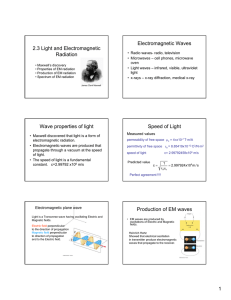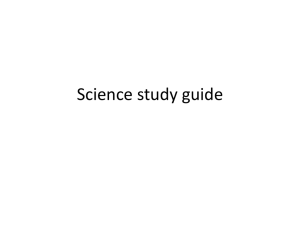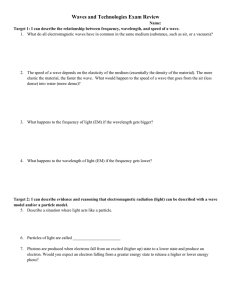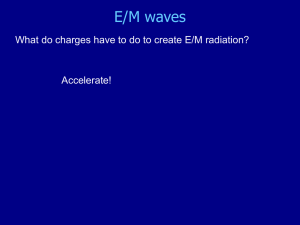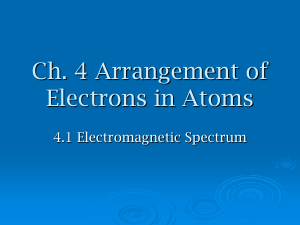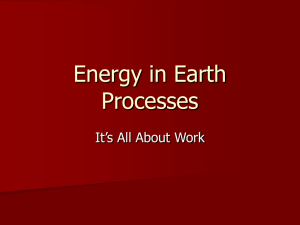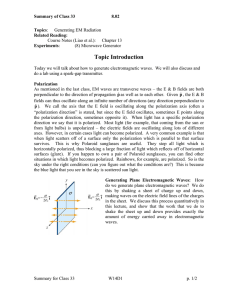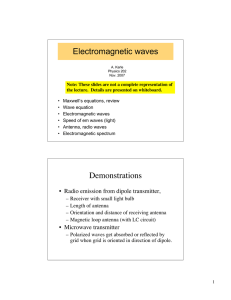Electromagnetic Waves 2.3 Light and Electromagnetic Radiation
advertisement
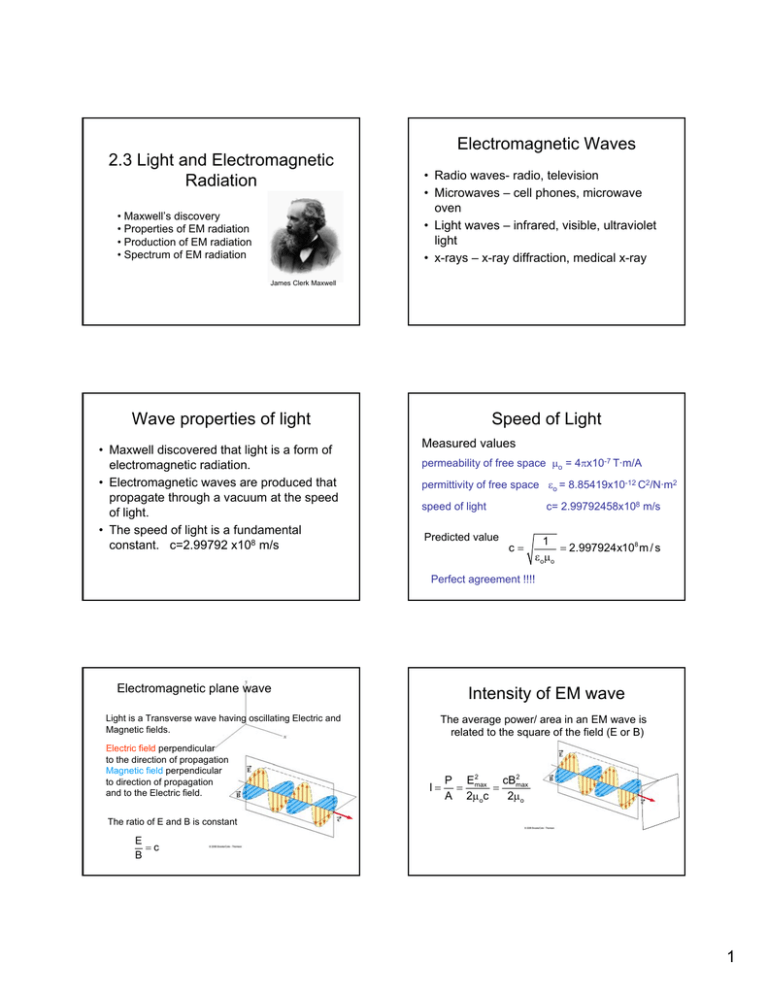
2.3 Light and Electromagnetic Radiation • Maxwell’s discovery • Properties of EM radiation • Production of EM radiation • Spectrum of EM radiation Electromagnetic Waves • Radio waves- radio, television • Microwaves – cell phones, microwave oven • Light waves – infrared, visible, ultraviolet light • x-rays – x-ray diffraction, medical x-ray James Clerk Maxwell Wave properties of light • Maxwell discovered that light is a form of electromagnetic radiation. • Electromagnetic waves are produced that propagate through a vacuum at the speed of light. • The speed of light is a fundamental constant. c=2.99792 x108 m/s Speed of Light Measured values permeability of free space µo = 4πx10-7 T·m/A permittivity of free space εo = 8.85419x10-12 C2/N·m2 speed of light Predicted value c= 2.99792458x108 m/s c= 1 = 2.997924x108 m / s εoµo Perfect agreement !!!! Electromagnetic plane wave Light is a Transverse wave having oscillating Electric and Magnetic fields. Electric field perpendicular to the direction of propagation Magnetic field perpendicular to direction of propagation and to the Electric field. Intensity of EM wave The average power/ area in an EM wave is related to the square of the field (E or B) I= 2 2 P Emax cBmax = = A 2µ oc 2µ o The ratio of E and B is constant E =c B 1 Generation of the E field by an oscillating dipole antenna Production of EM waves • EM waves are produced by oscillations of Electric and Magnetic fields. Heinrich Hertz Showed that electrical oscillation in transmitter produce electromagnetic waves that propagate to the receiver. The magnetic field associated with the E field A B field is generated perpendicular to the E field. Interactions of EM radiation with an Antenna. Oscillating Electric field drives the movement of charges in a conductor + E E - B • An optimal antenna to capture energy from an EM wave has a size close λ. (λ/2 for a dipole antenna) + Passage of EM radiation through holes in a conductor Electromagnetic radiation f= reflected transmitted • EM waves pass easily through holes in a conductor that are larger than λ but are blocked by holes smaller than λ. • When the size of the hole is close to the λ, interference and diffraction effects are observed (discussed later). c λ increasing f increasing λ 2 Radio Waves Microwaves Fm radio, TV f ~ 100 MHz λ~1m f~ 1-10 GHz λ~ 1-10 cm ½ dipole antenna length =λ/4 Microwave ovens and cell phones. Microwaves are absorbed by water molecules reoriented by the E field Frequency =2.45GHz Power ~ 1kW compare to cell phone power ~1W. E field • Microwaves are reflected from the walls of the cooking chamber and the energy is confined to cook the food. • Microwaves form standing waves in the chamber. Visible Light O H H electric dipole orients with the fluctuating field The reorientation time for water rotation is matched to the microwave frequency Silver nano-particles f~1015 Hz λ~ 400-700 nm stained glass, gold particles with diameter ~100 nm scatter specific colors of light Electron micrograph light micrograph 3 The wavelength of light limits the resolution of the microscope to λ ~ 1µm X-rays f ~ 1016-1020 Hz λ~ 10-8 -10-12 M Atomic dimensions x-ray diffraction pattern 3-dimensional structure ~ 10 µm Red Blood cels X-rays X-rays penetrate soft tissue but are absorbed by heavy atoms, such as Calcium in bones. 4
